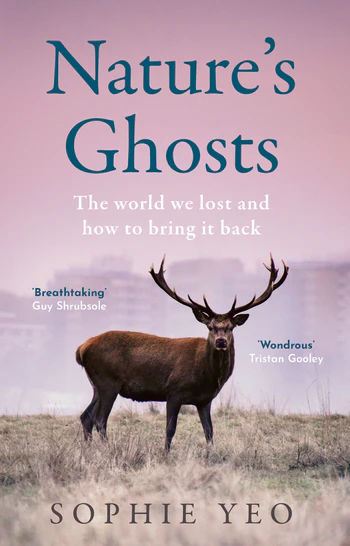This is a challenging book to sum up in a few words. Partly that is down to the sheer breadth of coverage. We drift back and forth between the ancient history of life on earth, the impacts of humans on the land since our arrival, and places where ecological integrity persists despite everything. Perhaps, too, I was thrown by the sub-title. The book is certainly about ‘the world we lost’ and the extent to which humans have hastened its demise; but there is little here about ‘how to bring it back’, at least not the practicalities of making it happen. The book is more about why we should bother, and what we can learn from our ancestors through the clues that they have left for us. These, then, are the ghosts: traces of lives once lived, their meaning – even their existence – sometimes disputed; but haunting the world still, and offering valuable insights into our possible futures.
A core theme of the book is the ‘entanglement’ between people and nature. We are the world’s most significant keystone species, and while, for the most part, we have wreaked havoc, we are also capable of harmonious coexistence with wildlife. The further back in time you look, the more harmonious things become. Even so, remarkably early on in our history we inflicted significant and irreversible wounds, the effects cascading down the millennia in unexpected ways. We hacked and burned our way into the wildwood. We hunted down the huge herbivores that now seem more myth than reality. And we set ecosystems on new trajectories that can never be reversed.
Where might we still find harmony? One example is the celebrated mosaic of flower-rich grasslands and scrub in Transylvania, which is described in vivid detail. If we lose the connections that exist here between traditional farmers and their land, either through intensification or through abandonment, then the rich, interwoven threads of diversity begin to unravel; opting out and allowing nature to take its course is not always the best option, at least in the short term. There are different lessons from visits to wild places in Finland and France. And we are shown around rewilding projects, including Carrifran and Glen Affric, where bold decisions about restoration have already been taken. There is no going back to what we once had, but there remains the vexed question about the extent to which human meddling is acceptable as we seek to return some wildness to our world.
When it comes to discussion of why we must act, I enjoyed the author’s gentle debunking of appeals to the spiritual and the mythological (although, as is probably true for all of us, she is unable to escape their grasp entirely). We evolved firmly enmeshed within the natural world, and have depended upon it for all but a tiny fraction of our history. We are hard-wired to appreciate (and to benefit from) wildness. That, surely, is reason enough to look after it.
These topics (and many of the places described) might be familiar to readers here. But what the book does so well is bring them together into a coherent narrative, piecing together our long history and providing insights into how best we might make use of that knowledge. Nature’s Ghosts provides a wonderfully fresh perspective and Sophie Yeo tells the story beautifully. She has also done the hard yards in picking through the latest research and talking to the relevant experts. There is substance here as well as style. Whether you are a newcomer to these issues or a battle-hardened rewilder, this book might just change the way you think about the future of our beleaguered planet.

